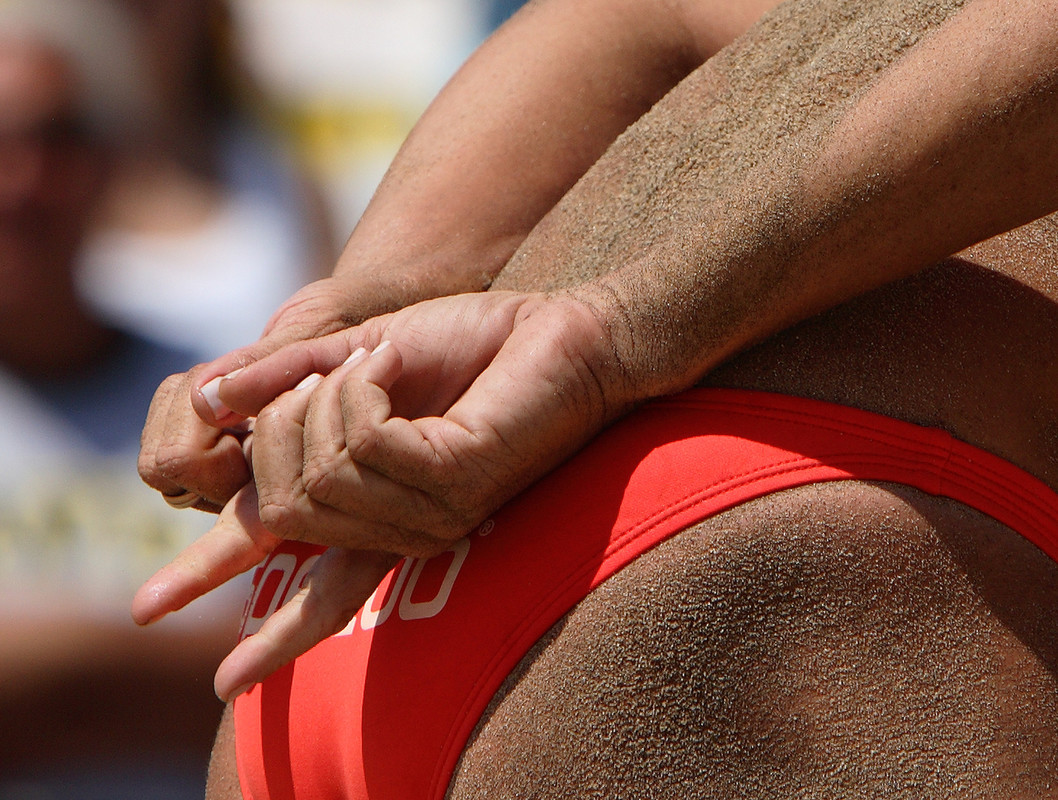Many fans wonder, “What’s the madness behind the numbers the athletes hold above their back side?” Well, I’m going to solve one of the biggest mysteries for the average volleyball fan and give you some inside information on what is being communicated. Those numbers are all signals for defensive plays and strategies. While teams may have different signals for specific plays, here is the Hand Signals 101 that majority of teams use.
When you see a player flash a number behind their back they are communicating with their teammate on what their block and defensive play will be. The sign on your left hand corresponds to your left side of the court (the athlete playing right side), and the sign on your right hand corresponds to the right side of the court (the athlete playing left side). Confused yet?!? Stick with me and we can figure this out together. Next up… the decryption of the numbers and signals.
1 – This signal means I’m going to block line and my defender will play defense in the angle. Now, if the set is off the net and I decide to pull back for defense (and am ready to use my hands to dig 😝), then I will pull line down the line.
2 – For the two finger signal, I’m blocking angle and my defender will slide into the line to dig line. If I decide to pull because of a bad set, then I will pull in the angle direction.
Closed fist- The closed fist comes into play when my scouting report and confidence is strong against a hitter. Holding a closed fist means I’m going to read and block the ball, and my defender will read and dig what she sees. Blocking may be a defensive strategy but I see this play as an offensive move and I’m going for the point.
3- Strategy gets a little crazier now. Flashing three fingers, I will make a dive block towards the line. The strategy is to bait my opponent into thinking line is open for a hard swing, but I dive into the line last minute and clamp down for a block.
4- This blocking strategy is the opposite of the three call. I flash four fingers, show angle early, and then dive block into the angle. Again, my job is to bait them into thinking and swinging towards an open angle, but I close down the angle last minute.
 These are just a few of the blocking and defensive plays us AVP players run. Some teams get more intricate or have a variation of the above, but you connect with your partner in practice and before game time, and do what works best for your team.
These are just a few of the blocking and defensive plays us AVP players run. Some teams get more intricate or have a variation of the above, but you connect with your partner in practice and before game time, and do what works best for your team.
Now, that you have the hand signals down, there are other pieces of information to give with these hand signals. Stick with me here! If my opponent goes over on two in serve receive, I need to tell my defender what area of the court I will be blocking. My partner and I do this by simply flashing a hand. If my opponent decides to run a back set, my defender and I need to be ready. I communicate what I will be blocking on the back set with the signal and holding it higher against my back, and my defender will know where to expect the ball for a dig.
As you have learned, lots of information to communicate before your partner serves! Feel free to pass this on to your family and friends so you can enjoy the match without Grandma bugging you with signal questions. I will be passing this along to #EmsEntourage so they can stop assuming I’m giving the peace sign every time I’m taking angle.
The secret is out and the hand signal 101 has been established. But don’t think you’ve cracked the code and can beat me on the court, because my hand signals will stay hidden behind my butt 😉. Just get ready to cover your hitter!